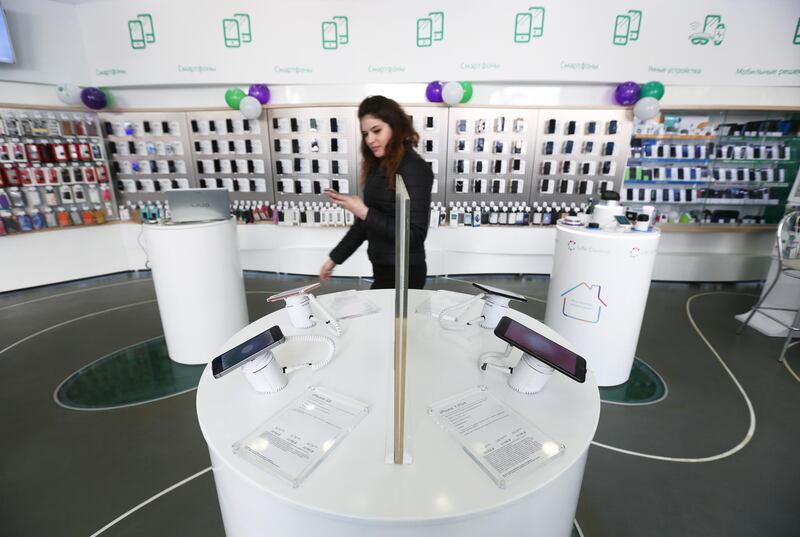All eyes will undoubtedly be on Apple this week as the company is set to unveil a new iPhone, the 10th anniversary model of the device that has dramatically changed the world over the past decade.
Much attention will go to its hardware specifications. Rumours suggest it could have a sexy bezel-less front face, possibly a curved screen and, surely, an improved camera.
But its most important feature may be considerably less glamorous.
Apple began talking up “differential privacy”, a relatively archaic subject that has thus far been the domain of academics and data scientists, at its developer conference last year.
The company has been slowly expanding it into more of the iPhone’s functions, to the point where it could now become a main attraction.
Indeed, differential privacy is about to be adopted by every company that truly cares about keeping user data secure. Apple may very well lead the way this week.
Differential privacy is, in a nutshell, a mathematically provable way of keeping user data anonymous.
Online service providers and device makers of all stripes currently promise users that their information is safe from prying eyes because it is only ever gathered in aggregate and then anonymised.
All of the emails we send, photos we take and phone calls we make feed various machine-learning systems or advertising platforms but none of that info is ever separated out individually and used to identify us – or so the companies say.
The reality is, anonymised data is often anything but. Enterprising and creative individuals can de-anonymise such information by cross-referencing it with other available data.
One well-cited example happened back in 2007, when Netflix released a set of its viewers’ film ratings as part of a contest to help improve its recommendation engine. Researchers at the University of Texas at Austin cross-referenced those ratings with public information on the Internet Movie Database website and were able to identify specific users.
It is not that hard to do.
Suppose you ran a survey of a hundred people and asked them their favourite colour, and a single respondent picked purple. Then, suppose you asked the same people how many of them illegally download movies, and 10 said they do. If someone answered yes to the second question and that their favourite colour was purple, it would be relatively easy to figure out their identity.
_______________
Read more:
Most popular mobile phones in UAE, Q2 2017 - in pictures
Increase in malicious spam after WannaCry ransonware attack, report says
_______________
Differential privacy adds noise to the information and makes it impossible to assemble conclusions from cross-references.
In the above example, 10 of the 100 respondents could instead be asked to randomly say “yes” or “no” instead of answering the question about piracy. That variable would decrease the overall accuracy of the survey, since you would only have 90 true respondents, but it would also make it impossible to definitively say which individual pirates movies and prefers purple.
It is a trade-off that is becoming more appealing to online service providers and device makers, since users are starting to demand more protections on their privacy.
Apple began applying differential privacy to the iPhone’s auto-correct capabilities last year, then expanded it to Web browsing and health data this year. The company is using the process as a way to differentiate itself from other tech companies, especially Google, by positioning itself as privacy champion.
It makes sense, since the company is in the business of selling gadgets, whereas Google makes its money from advertising - or essentially selling aggregate user data.
That is not to say Google is not looking at differential privacy, too. The company earlier this year said it is experimenting with what it calls “federated learning”, a similar technique, with its Gboard keyboard app for Android, and that it could also be used for photo rankings.
Google may, in fact, have more of an impetus to adopt differential privacy, since its reputation could take a major hit with users should miscreants figure out ways of de-anonymising the mountains of data it collects. The same goes for Facebook, Netflix and every other tech company that relies on its users’ information, rather than a cash-register sale, to make its money.
In the meantime, a higher level of privacy remains Apple’s advantage. It is one the company would be smart to highlight, along with a better camera and a shinier screen, at its iPhone extravaganza this week.
Winner of the Week: Huawei. The Chinese company last week passed Apple to become the world's second-biggest smartphone maker, after Samsung, according to the market research firm Counterpoint. The result is likely to be temporary, as Apple sales are surely set to take off with the release of the next iPhone, but it is a clear indication of how fast Huawei is growing globally.
Loser of the Week: Facebook. The social network revealed that a Russian firm linked to the Kremlin bought thousands of ads in the run-up to last year's US election in an attempt to influence its outcome. The bombshell is sure to deepen calls in several countries for greater political and regulatory oversight of the company's activities.






